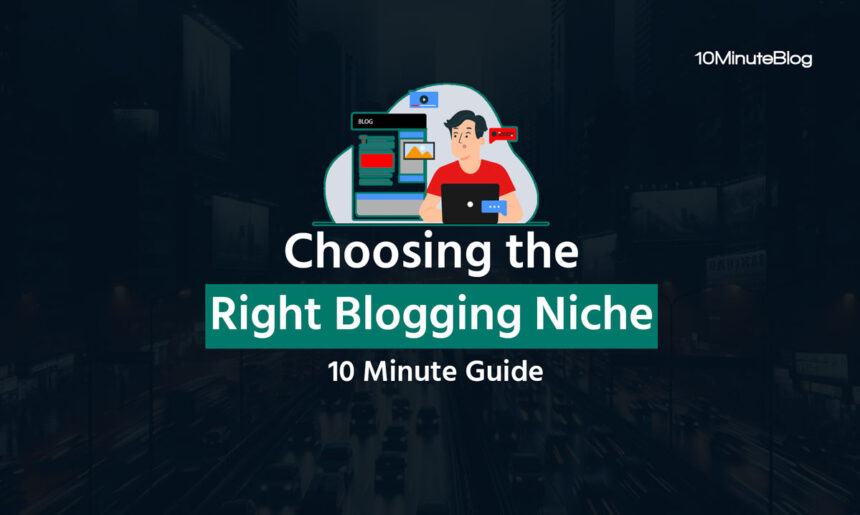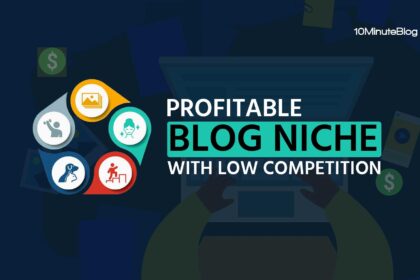In the ever-evolving world of blogging, choosing the right blogging niche is the cornerstone of your success. Whether you’re a beginner or a seasoned blogger, your niche determines your audience, your content strategy, and ultimately, your ability to monetize your blog. But with millions of blogs competing for attention, how do you find a niche that’s not only profitable but also sustainable in 2025?
This guide will walk you through the process of finding a good blog niche, conducting keyword research for blogging, and uncovering low competition blogging niches that can help you increase organic traffic to your blog. By the end of this 10-minute read, you’ll have a clear roadmap to choose the perfect niche for your blog and set yourself up for long-term success.
Why Choosing the Right Blogging Niche Matters
Before diving into the “how,” let’s talk about the “why.” Choosing the right niche for your blog is crucial because:
1. It Defines Your Audience: A well-defined niche helps you attract a specific audience who are genuinely interested in your content.
2. It Builds Authority: Focusing on a niche allows you to become an expert in that area, making it easier to rank for relevant keywords.
3. It Increases Monetization Opportunities: Niches with high demand products or high ticket affiliate marketing niches can generate significant revenue.
4. It Reduces Competition: A niche with low competition keywords with high traffic gives you a better chance to rank on search engines.
Now that you understand the importance, let’s dive into the steps to choose the right blogging niche.
Step 1: Identify Your Interests and Expertise
The first step in choosing the right blogging niche is to look inward. Ask yourself:
- What topics am I passionate about?
- What skills or knowledge do I have that others might find valuable?
- Can I see myself writing about this topic for years to come?
For example, if you’re passionate about fitness and have experience as a personal trainer, a fitness blog could be a great niche. But don’t stop there—narrow it down further. Instead of a general fitness blog, consider a micro niche for blogging like “yoga for beginners” or “home workouts for busy professionals.”
Step 2: Research Market Demand
Once you’ve identified a few potential niches, it’s time to validate their market demand. Here’s how:
Use Keyword Research Tools
Tools like Ahrefs, SEMrush, or Ubersuggest can help you identify low competition keywords with high traffic. Look for keywords with:
- A decent search volume (at least 1,000 monthly searches).
- Low keyword difficulty (KD) score (below 30 is ideal for beginners).
For example, if you’re considering a niche like “sustainable living,” you might find that “eco-friendly home products” has a high search volume and low competition.
Analyze Competitors
Check out other blogs in your potential niche. Are they successful? What kind of content are they creating? Use tools like SimilarWeb to analyze their traffic sources and identify gaps you can fill.
Step 3: Evaluate Monetization Potential
A niche might be interesting and have demand, but can it make you money? Here are some ways to evaluate monetization potential:
Affiliate Marketing
Look for niches with high ticket affiliate marketing niches. For example, tech gadgets, software tools (like AppSumo lifetime deals), or luxury travel can be lucrative.
Ad Revenue
Niches with high CPC (cost-per-click) rates, like finance or insurance, can generate significant ad revenue.
Product Sales
If you plan to sell your own products, ensure your niche has high demand products. For example, the health and wellness niche is booming, with products like supplements and fitness gear selling like hotcakes.
Step 4: Choose a Micro Niche
One of the biggest mistakes beginners make is choosing a broad niche. Instead, focus on a micro niche for blogging. Here’s why:
- Less Competition: Micro niches have fewer competitors, making it easier to rank.
- Targeted Audience: A micro niche attracts a highly specific audience, increasing engagement and conversions.
- Easier to Monetize: A focused niche allows you to target specific affiliate programs or products.
For example, instead of a broad niche like “travel,” consider “budget travel for solo female travelers.”
Step 5: Test Your Niche
Before committing to a niche, test it out. Here’s how:
Create Sample Content
Write a few blog posts and see how they perform. Use tools like Google Analytics to track traffic and engagement.
Engage with Your Audience
Share your content on social media or forums related to your niche. Pay attention to the feedback and engagement you receive.
Validate with Paid Ads
Run a small ad campaign to see if your target audience is interested in your content. This can also help you identify high demand products or services.
Step 6: Optimize Your Blog for SEO
Once you’ve chosen your niche, it’s time to optimize blog posts for SEO. Here are some quick tips:
- Use your focus keyword (choosing the right blogging niche) in the title, meta description, and first 100 words of your post.
- Include related keywords like low competition blogging niche, keyword research for blogging, and blogging for beginners.
- Use internal linking to guide readers to other relevant posts on your blog.
- Optimize for mobile and improve page speed to enhance user experience.
Step 7: Stay Consistent and Adapt
The blogging landscape is constantly changing, so it’s important to stay consistent and adapt to new trends. Here’s how:
- Publish content regularly to keep your audience engaged.
- Stay updated on industry trends and adjust your content strategy accordingly.
- Experiment with new formats like videos, podcasts, or infographics to reach a wider audience.
Blog Niche Ideas for 2025
Still unsure about your niche? Here are some unique niche ideas to consider:
1. AI and Automation Tools: With the rise of AI, niches like “AI tools for small businesses” or “automation hacks for productivity” are gaining traction.
2. Sustainable Living: Topics like “zero-waste lifestyle” or “eco-friendly home products” are in high demand.
3. Remote Work and Digital Nomadism: As remote work becomes the norm, niches like “best tools for remote teams” or “digital nomad lifestyle tips” are thriving.
4. Mental Health and Wellness: With increasing awareness, niches like “mindfulness for beginners” or “mental health apps” are highly sought after.
5. Niche Hobbies: Think “urban gardening” or “DIY home brewing.” These niches have passionate audiences and low competition.
Advantages of Blogging in 2025
Blogging isn’t just a hobby—it’s a powerful way to build a personal brand, share your expertise, and generate income. Here are some advantages of blogging:
1. Passive Income: Once your blog is established, it can generate income through ads, affiliate marketing, or product sales.
2. Flexibility: You can blog from anywhere in the world, on your own schedule.
3. Personal Growth: Blogging helps you improve your writing, research, and marketing skills.
4. Community Building: A successful blog allows you to connect with like-minded individuals and build a loyal audience.
Final Thoughts
Choosing the right blogging niche is the first and most important step in your blogging journey. By following this 10-minute guide, you’ll be able to identify a niche that aligns with your interests, has market demand, and offers monetization potential.
Remember, the key to success is consistency and adaptability. Whether you’re exploring low competition blogging niches or diving into high ticket affiliate marketing niches, stay focused and keep learning.
Ready to start a blog and make money? Use this guide to choose the perfect niche for your blog and take the first step toward building a successful online presence in 2025.
By following these steps and leveraging tools like AppSumo lifetime deals for software needs, you’ll be well on your way to creating a blog that stands out in the crowded digital landscape. Happy blogging!

















